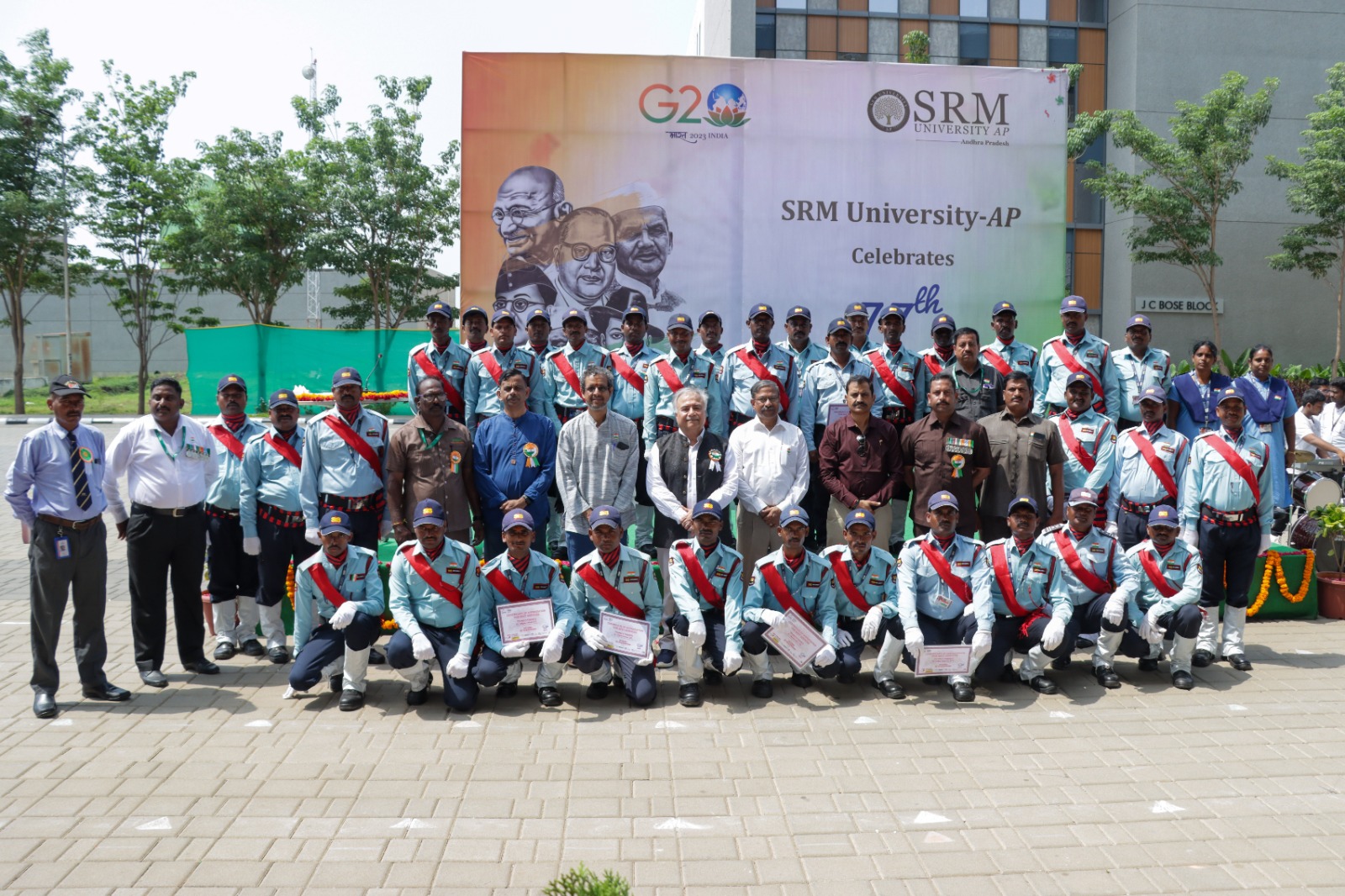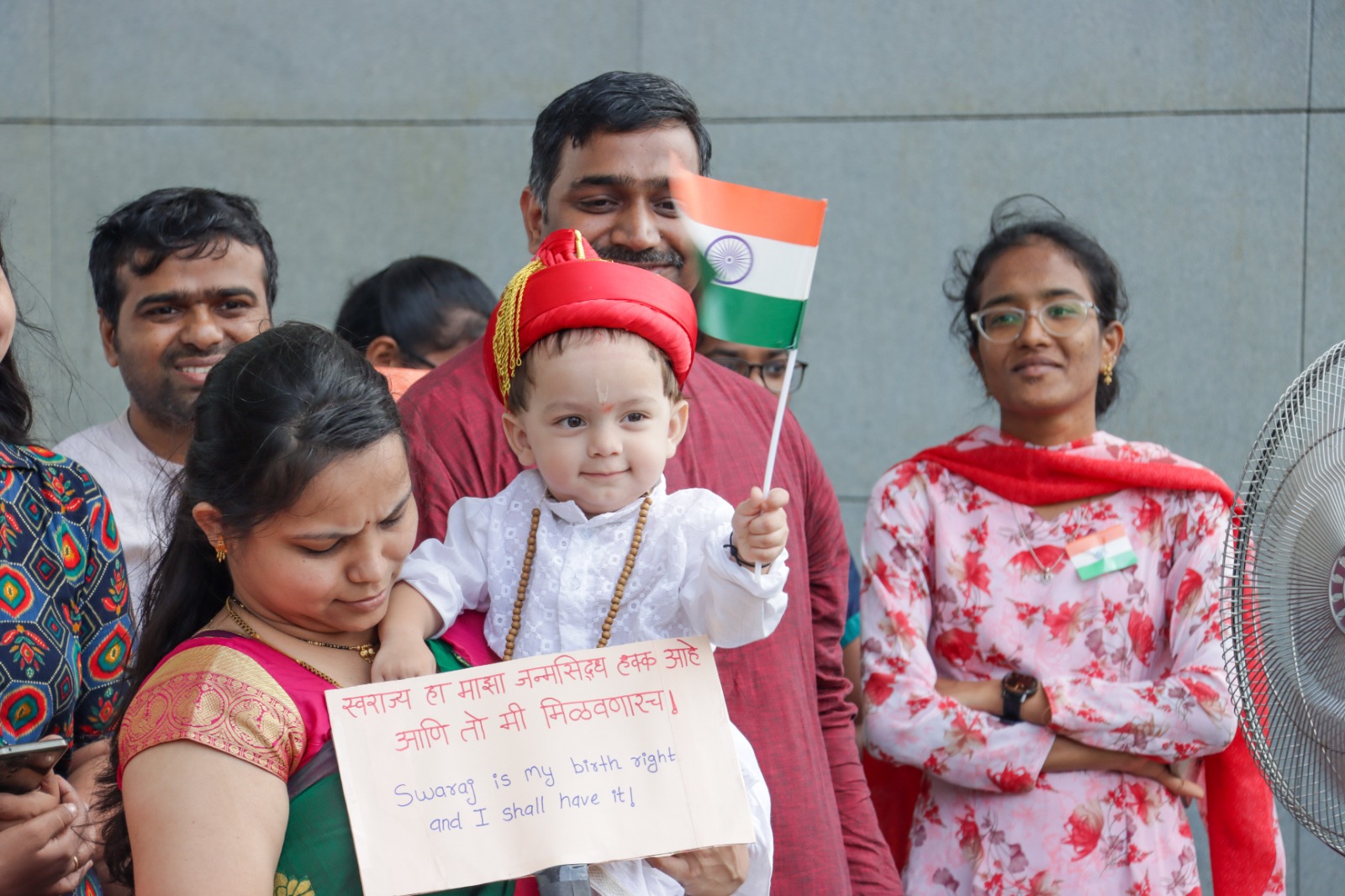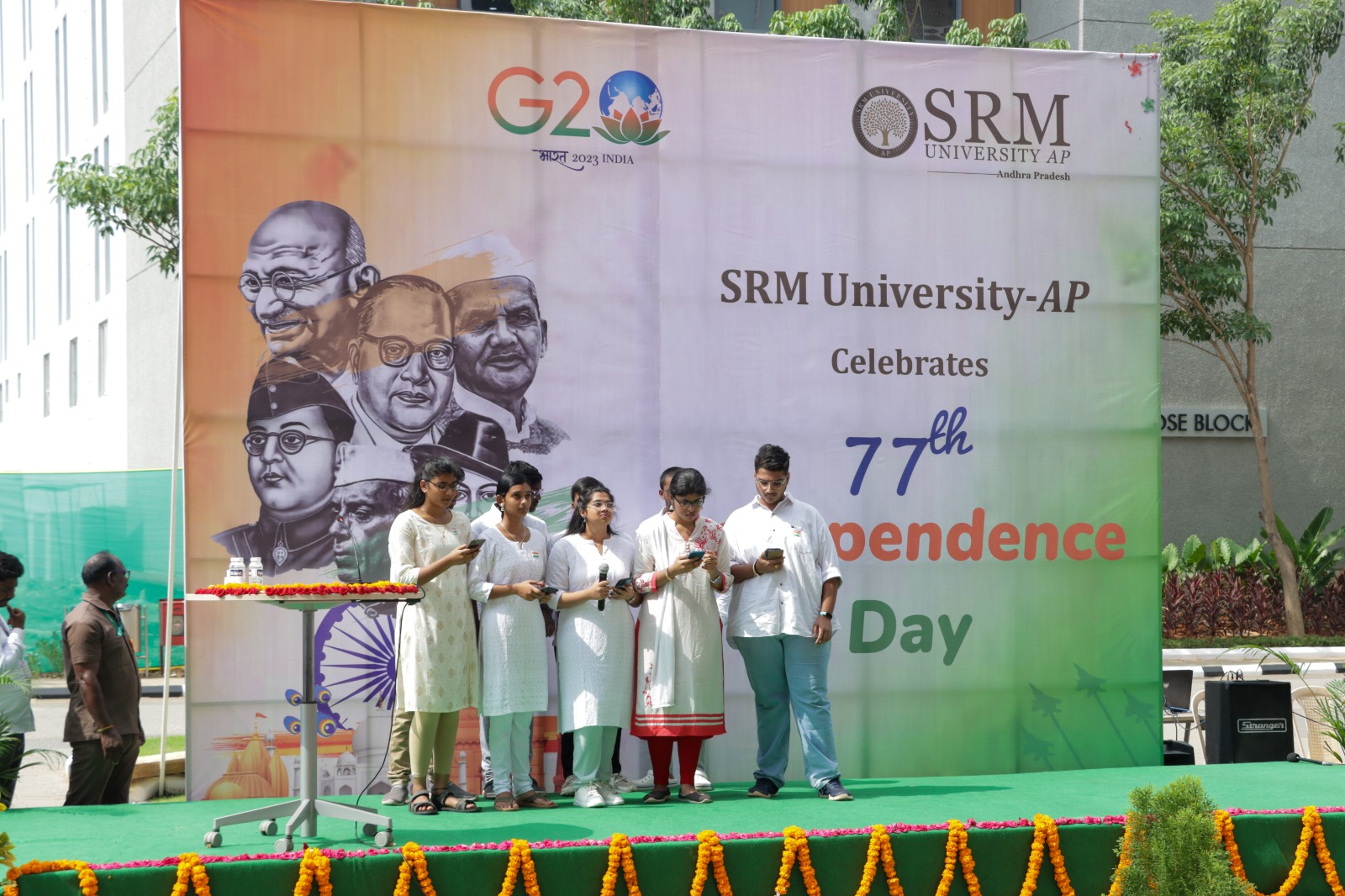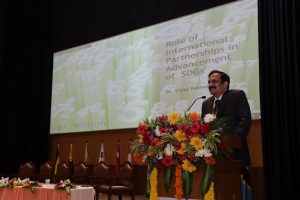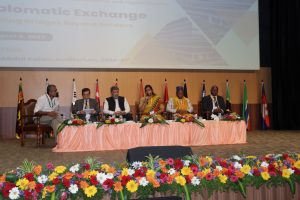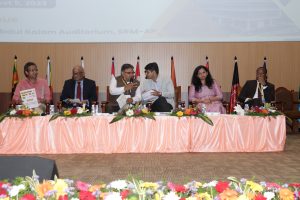All Management Events
- Mr Shaiju Panchikkil August 18, 2023
- Dr Chandan Kumar August 17, 2023
- Dr Adviti Devaguptapu August 17, 2023
- Dr Chebrolu Pulla Rao August 17, 2023
- 77th Independence Day Celebrations at SRM University-AP August 16, 2023
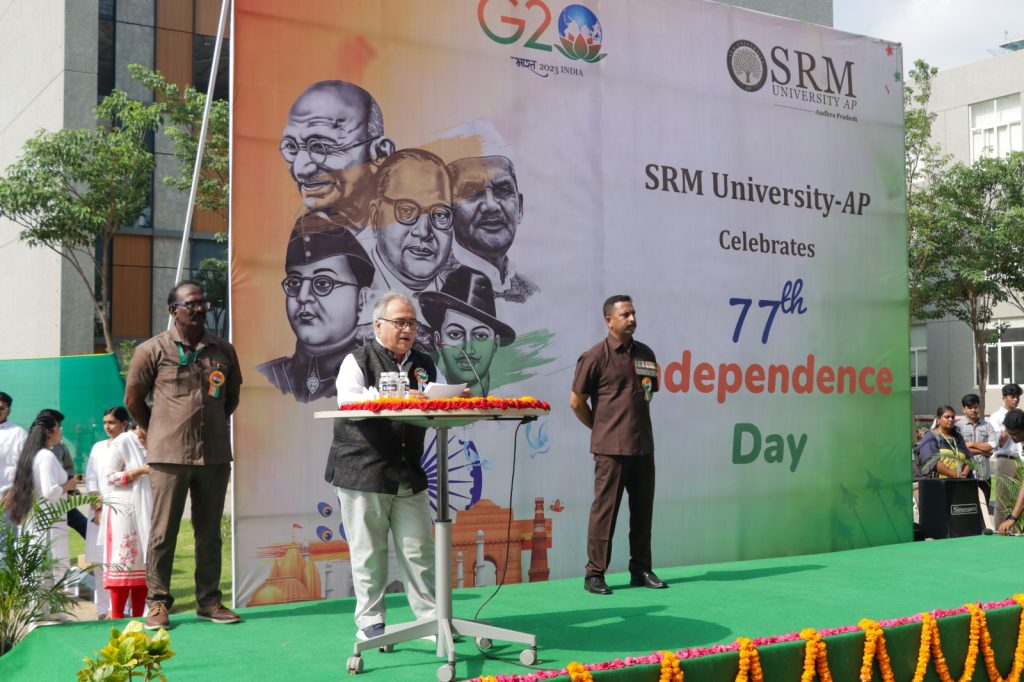
The 77th Independence Day was celebrated at SRM University-AP with a lot of patriotic fervour. Vice Chancellor Prof. Manoj K Arora hoisted the national flag and signalled the commencement of the festivities.
Prof. Arora highlighted the tremendous progress made over the 76 years since independence, attributing this success to virtues such as patience, resilience, honesty, hard work, and dedication. He recalled the words of the Hon’ble President of India, Draupadi Murmu, who underscored our shared Indian identity transcending barriers of caste, creed, and religion.
Vice Chancellor Prof. Manoj K Arora also recounted SRM University-AP‘s achievements in the past year, applauding not only the faculty and staff but also acknowledging the contributions of security guards, housekeeping personnel, plumbers, technicians, and construction workers, all of whom were cheered by the audience.
Prof. Arora reminded everyone of the university’s strategic goals for the next 5 years, urging collective efforts to realise these ambitions. He expressed confidence that by the end of this period, SRM University-AP would achieve recognition not just nationally, but globally.
Dr R Premkumar, Registrar SRM University-AP; Prof. Bharadwaj Sivakumar, Dean Paari School of Business, Prof. Ranjit Thapa Dean in-charge, School of Engineering and Sciences, Mr Pankaj Belwariar, Director Communications and other faculty and staff were attendance of the festivities.
The programme also witnessed an awe-inspiring parade organised by Campus Life Management and several cultural activities that were put up by the student community.
Continue reading → - Biological Science Researcher bags DST INSPIRE Fellowship August 9, 2023
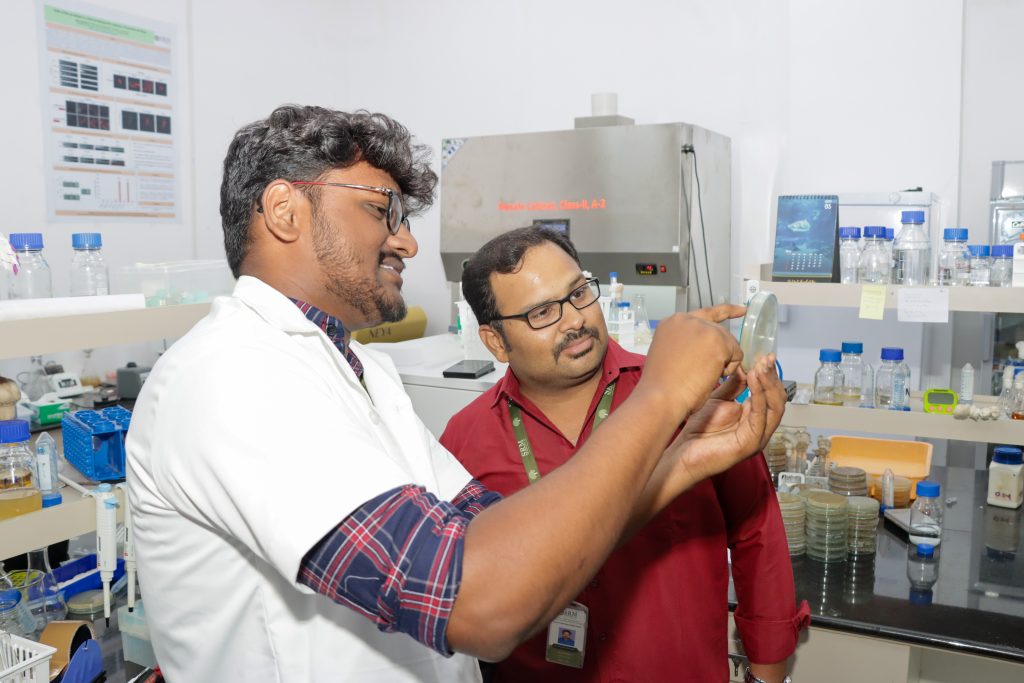
Barath Sivaraj, a research scholar from the Department of Biological Sciences at SRM University-AP has achieved an outstanding feat by receiving the DST INSPIRE Fellowship, a highly regarded programme sponsored and overseen by the Department of Science & Technology.
Sivaraj’s research focuses on exploring how bacteriophages, a type of virus that infects and reproduces inside bacteria, utilises the bacterial system. This research has earned Sivaraj the Fellowship, which runs for a duration of 5 years. The researcher also gets to carry out his research at any national or international laboratories other than their host institute for a period of 18 months.
Barath expresses his immense delight and pride in receiving this fellowship and considers it a significant milestone in his academic journey. Sivaraj explains that applicants must meet several criteria, such as being a top-ranked student in a full-time postgraduate science programme or a related field at the university level. Sivaraj credits his research supervisor, Dr Sutharsan Govindarajan, for guiding him through the application process. As a future prospect, Sivaraj plans to pursue his post-doctoral studies abroad and eventually wishes to offer his professional services at a reputable university.
We wish him all success!
Continue reading → - Dr Rajeev Shorey August 8, 2023
- “Diplomatic Exchange: Building Bridges Beyond Borders”- SRM University-AP hosts Diplomats from over 13 Countries August 7, 2023
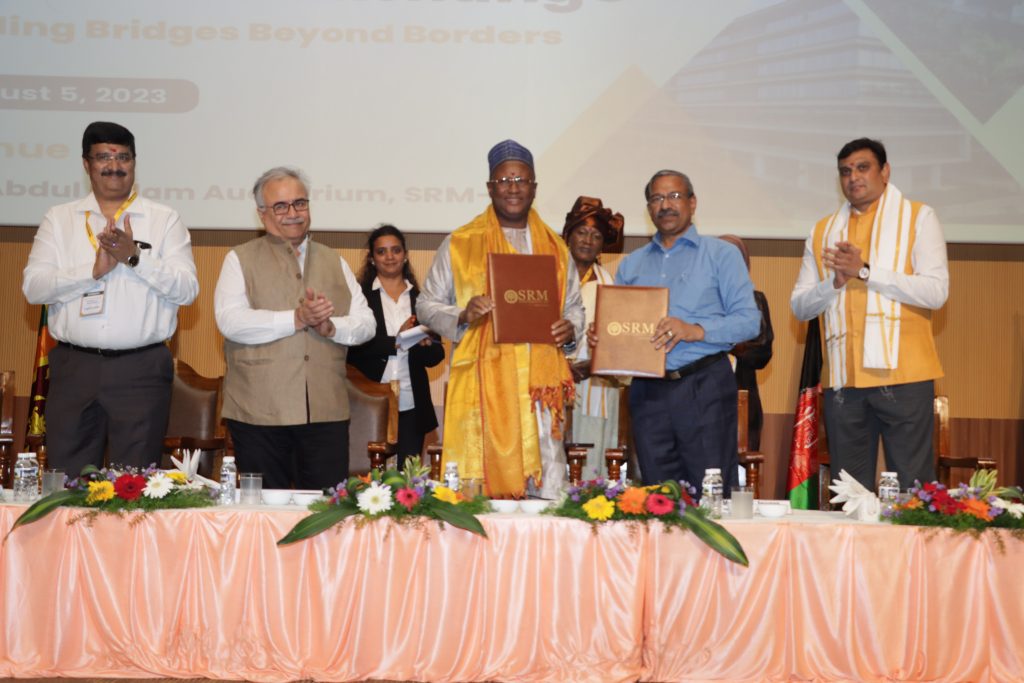
SRM University-AP organised an exclusive gathering of diplomats, academicians, and policy leaders from across the globe at the “Diplomatic Exchange: Building Bridges Beyond Borders” on August 05, 2023, to foster meaningful interactions, cultural exchange, and the establishment of strong global partnerships. The event was inaugurated with an auspicious lamp-lighting ceremony by H. E Mustapha Jawara, High Commissioner, High Commission – Republic of Gambia; Amb. Rtn. Anil Trigunayat (IFS Retd.), Chairman-Confederation of Education Excellence, Dr Harsha Bhargavi Pandiri, Assistant Director, Public Relations-Ministry of Culture, in the presence of Prof. Manoj K Arora, Honourable Vice Chancellor, SRM AP and Dr R Premkumar, Registrar; SRM AP. “We have had a long bilateral relationship with India for years, and we would like to continue to strengthen this camaraderie”, said H. E. Mustapha Jawara, Gambian High Commissioner while signing an MOU with SRM University-AP. Delegates and diplomats from over 13 countries gathered at the International Diplomat Meet.
“We are at an interesting phase in the global domain where India is emerging as an economic power and central contributor to the world. We are actively promoting the G20 initiative to achieve ‘One World, One Family’ and bridge the gap with the outside world through connection, coordination and cooperation”, commented Prof. Manoj K Arora, Vice Chancellor, SRM University-AP while addressing the delegates from various countries.
Chief Guest of the event, Prof. K Hemachandra Reddy, Andhra Pradesh State Council for Higher Education (APSCHE), praised the university on its flagship initiative. “An ancient Indian philosophy narrates that a student in pursuit of knowledge will acquire knowledge through four stages – 25% from teachers, 25% through curiosity, 25% from peers and 25% with time and experience.” This can be implemented in global education where a diversified academic pool will enhance the strength of our national education and youth. SRM University-AP has manifested this by establishing and building networks extending beyond state and national boundaries.”
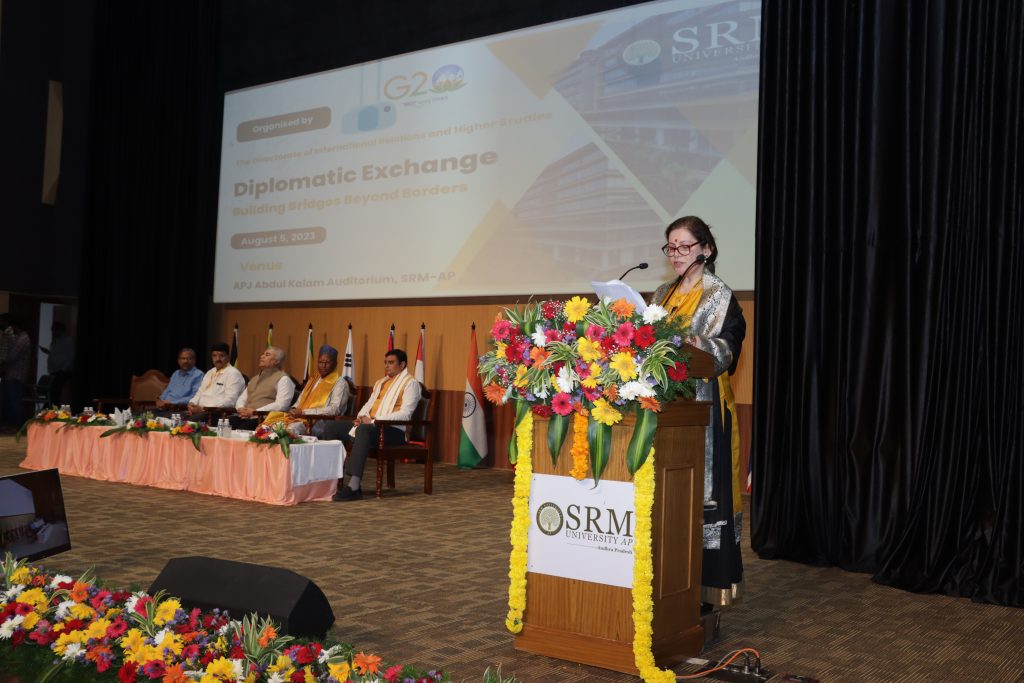
The Exchange emphasised the relevance of digital diplomacy in the postmodern political milieu. “With the strategic shift in the global world, India plays a pivotal role in leading the G20 summit. We as a nation recognise the power of digital diplomacy in crisis management and conflict resolutions in issues of national and international significance and promote digital diplomacy as an essential competency for diplomats in the 21st century”, commented Guest of Honour, Shri. P Samuel Jonathan, Andhra Pradesh State Information Commissioner.
Panel discussions on enhancing diplomatic relations through academic exchange, discourses on advancements of SDGs through international partnerships, and Press Meet were the highlights of the Diplomatic Exchange. Mr Suresh Chukkapalli, Consul General, Honorary Consulate of the Republic of Korea, suggested that countries like Taiwan and Japan have low populations and require India to provide a highly skilled workforce to their employment sector during the press meet. He enlightened the gathering on the high scope for employability in Asian countries and suggested the inclusion of academic and linguistic programmes at SRM university-AP to enhance the skill set of students.
The Diplomatic Exchange was marshalled under the aegis of the Directorate of International Relations and Higher Studies and Dr Naga Swetha Pasupuleti, Director-IR & HS, to promote constructive diplomatic connections between the leadership of various countries promoting global partnerships. The Meet sought to provide future leaders with an in-depth knowledge of diplomatic relations, digital diplomacy, and countries working towards ‘One World, One Earth, One Family’ by means of cross-cultural education.
Continue reading → - “Diplomatic Exchange: Building Bridges Beyond Borders”- SRM University-AP hosts Diplomats from over 13 Countries August 7, 2023
The Hindu
Continue reading →
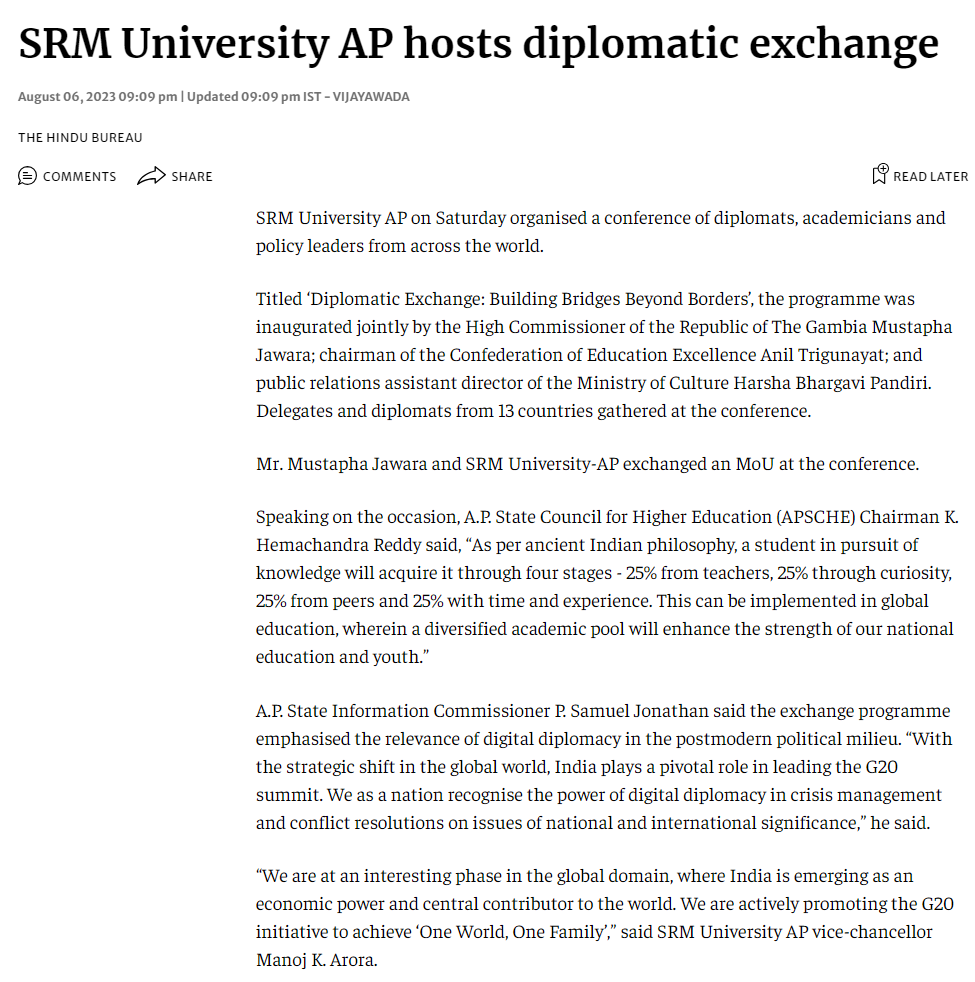
The Times of India
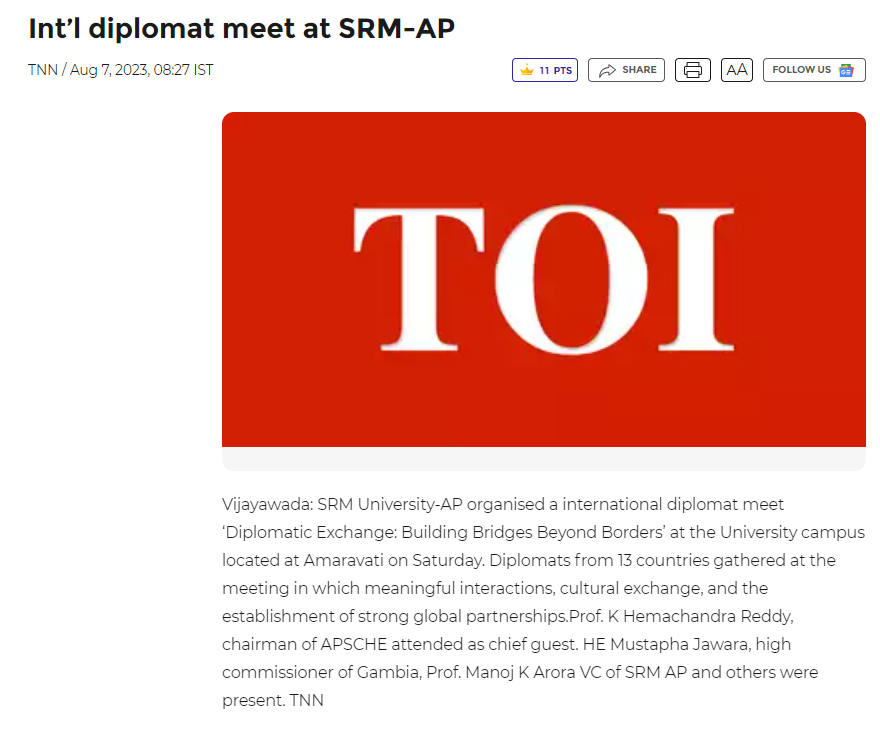
The New Indian Express
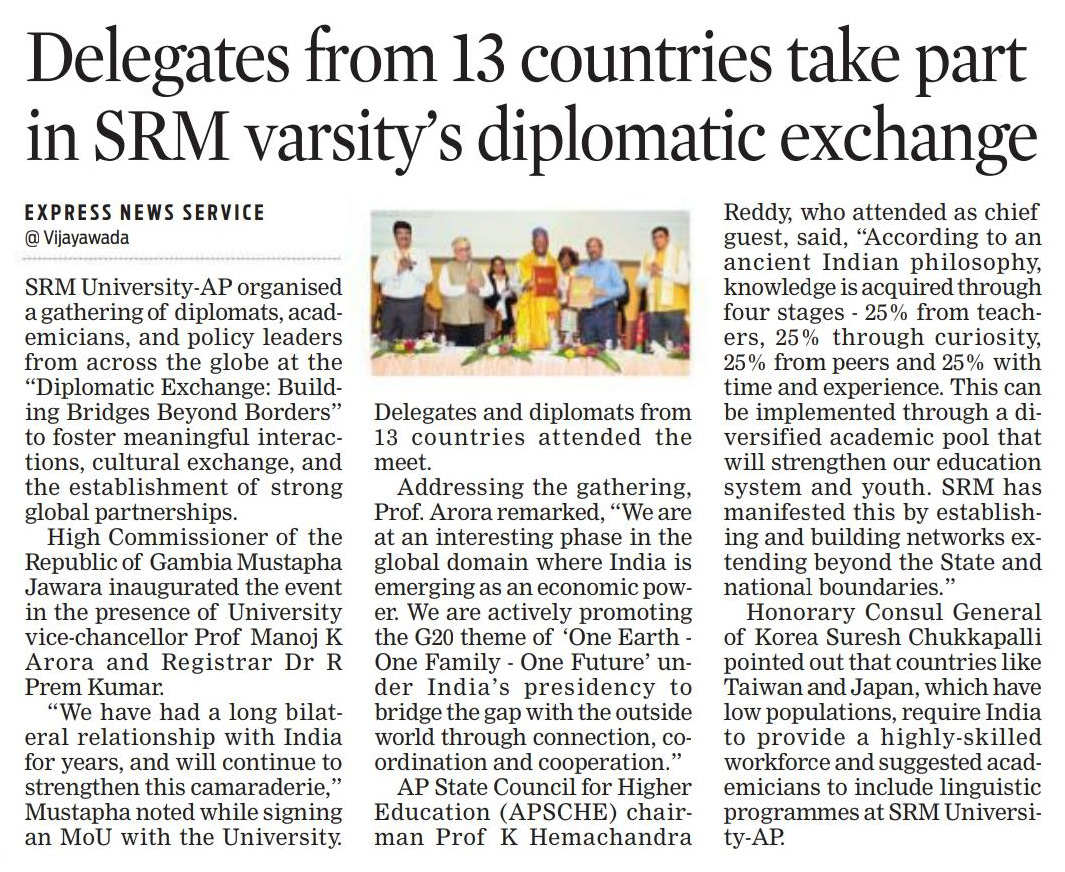
The Hans India
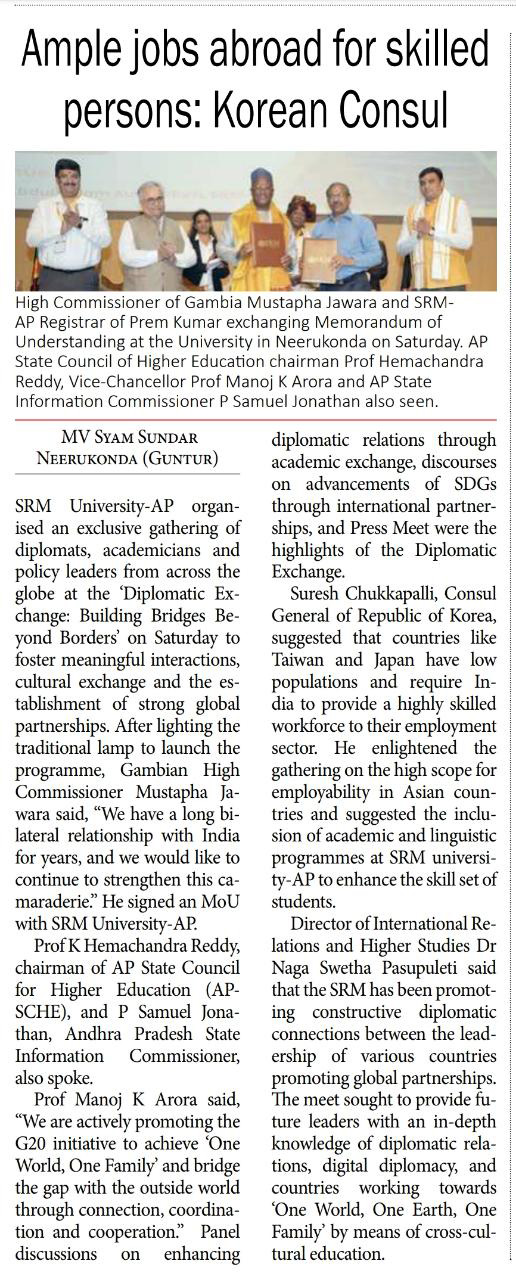
The Pioneer
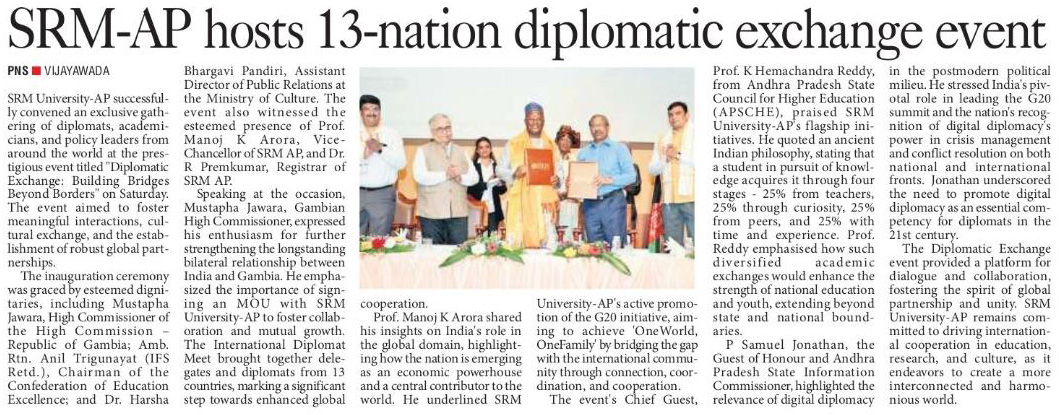
Eenadu
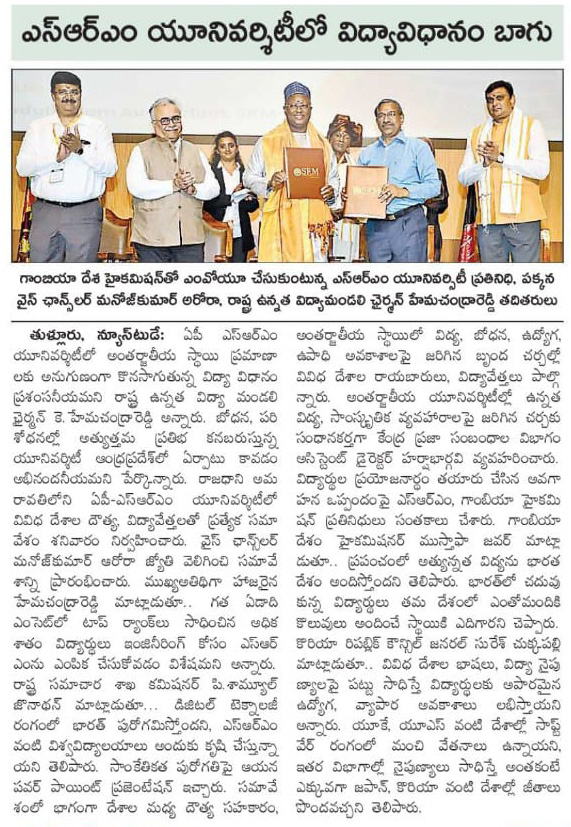
Andhra Jyoti
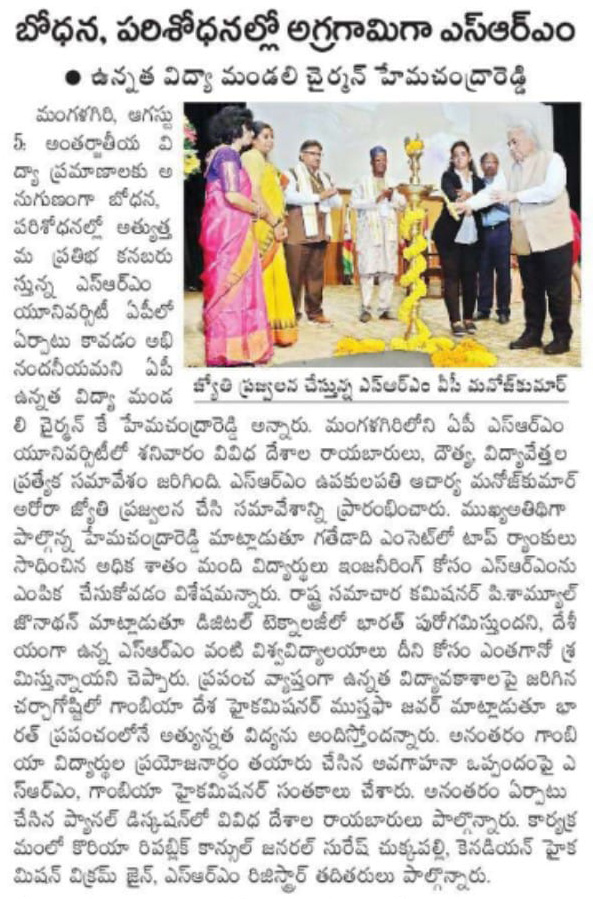
Praja Sakthi
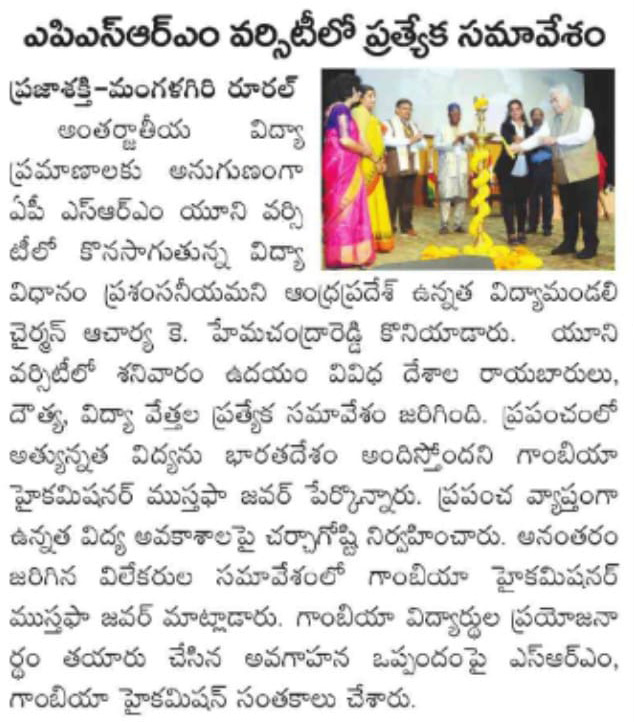
Surya
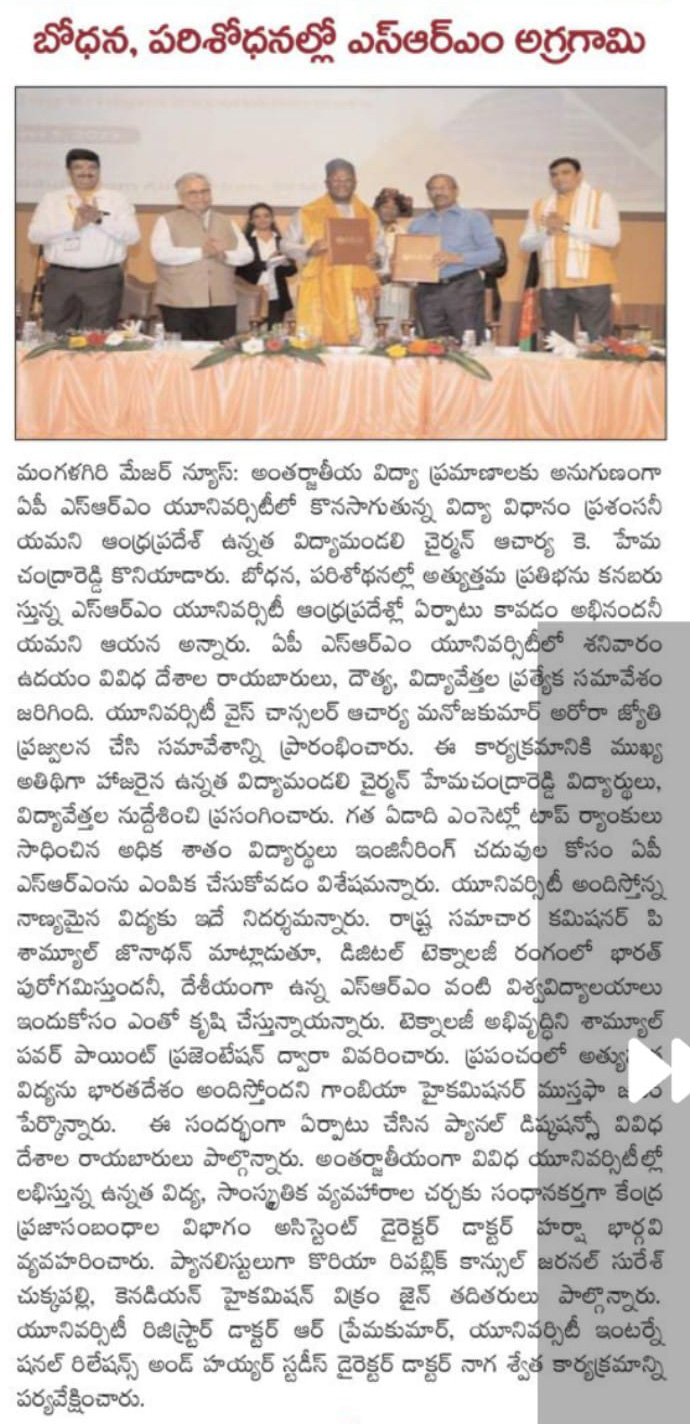
Andhra Prabha
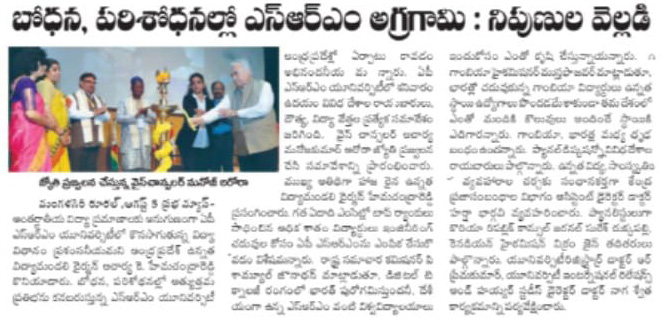
Andhra Jyothi
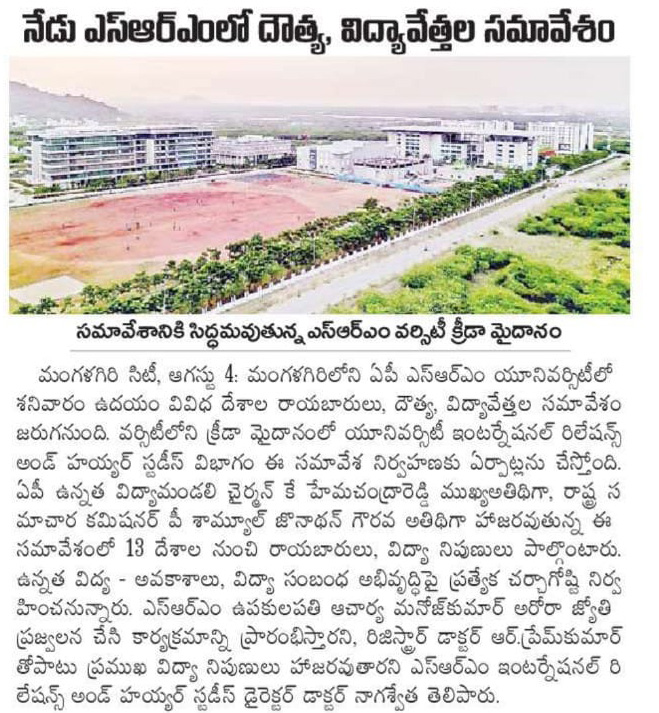
Andhra Patrika
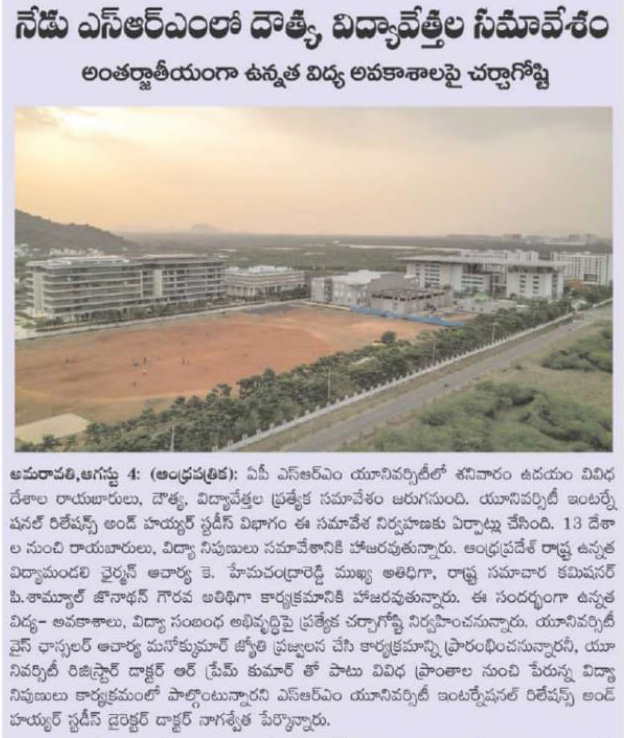
Prajasakthi
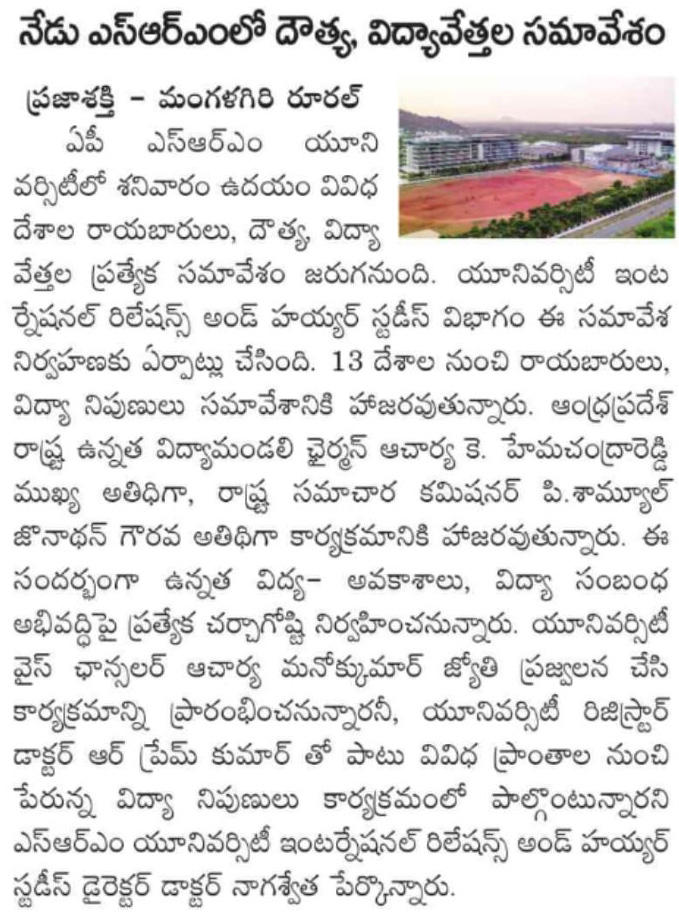
Major News
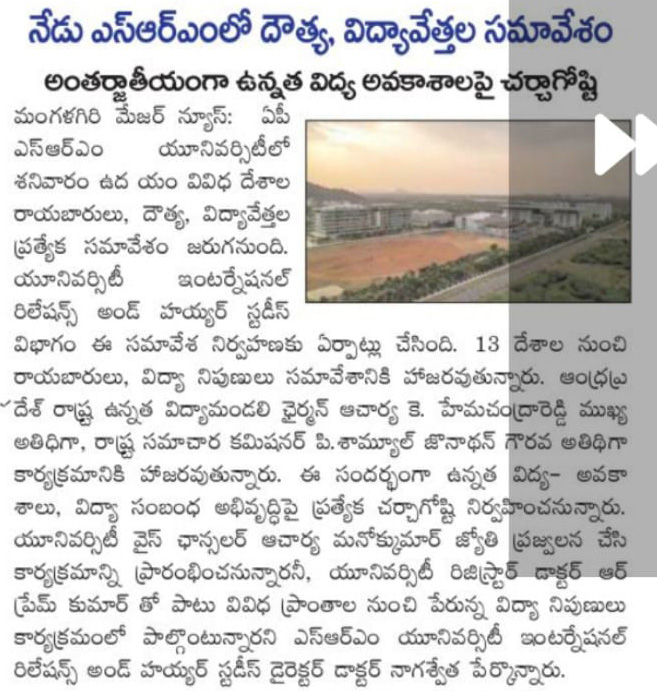
Vartha
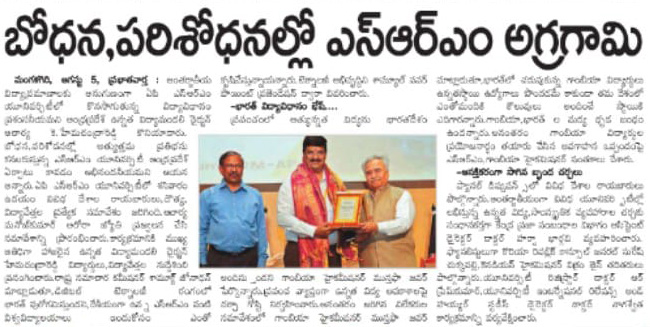

Visalaandhra
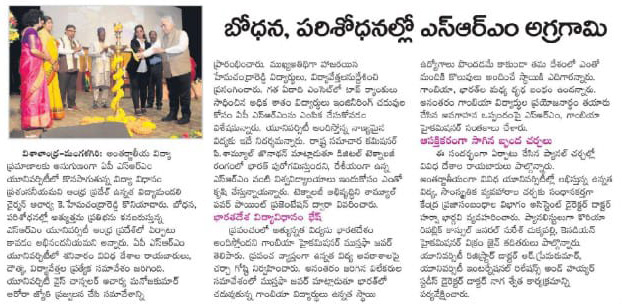
Andhra Patrika
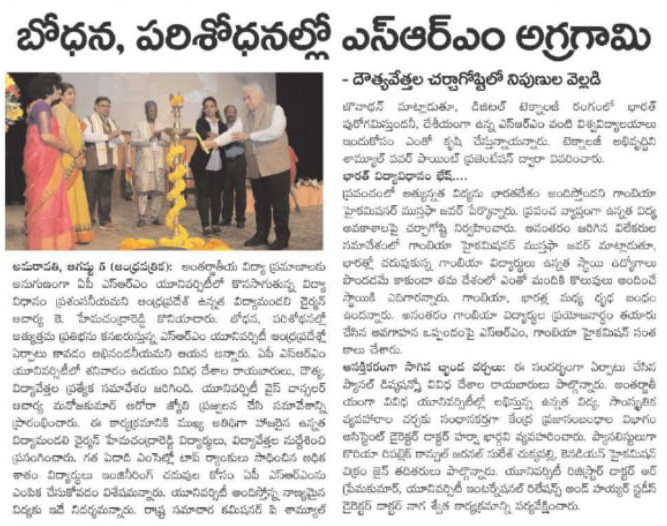
Vartha Prapancham
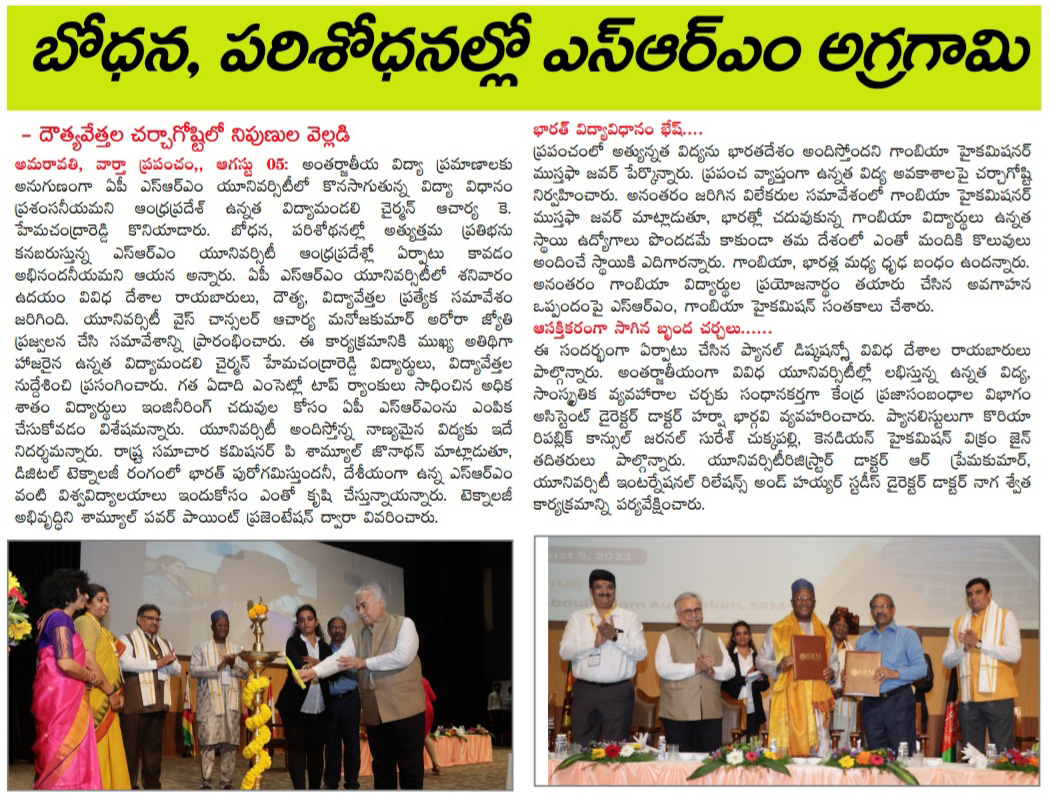
The Power
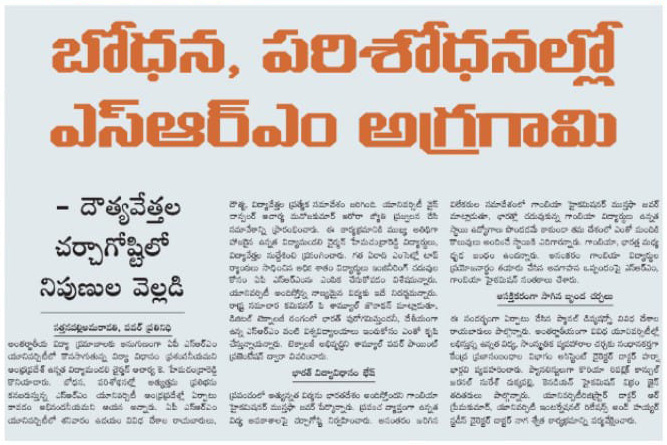
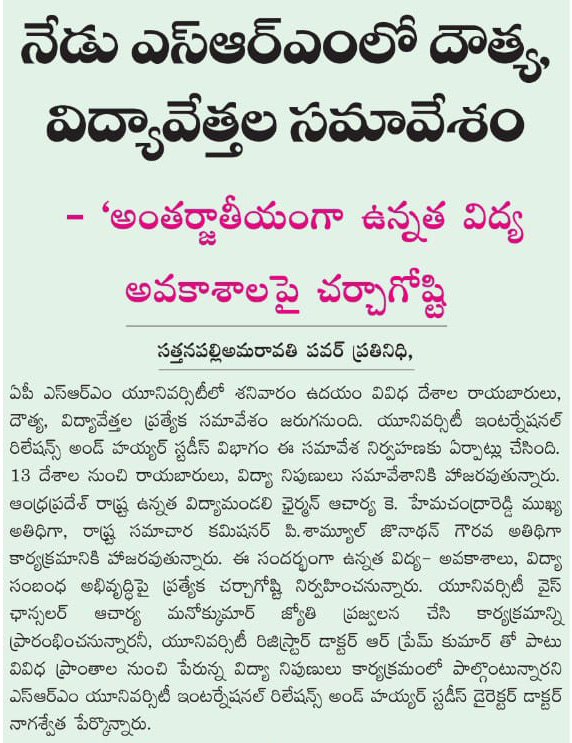
Arthprakash
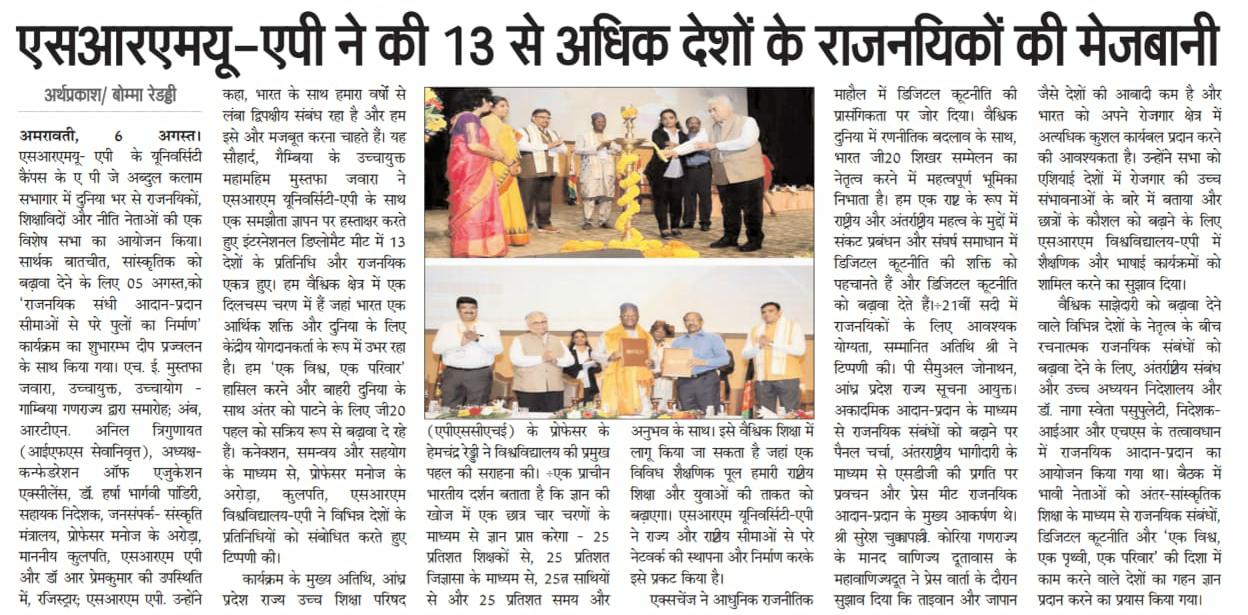
- Assistant Professor Certified as Remote Pilot Instructor under DGCA August 4, 2023
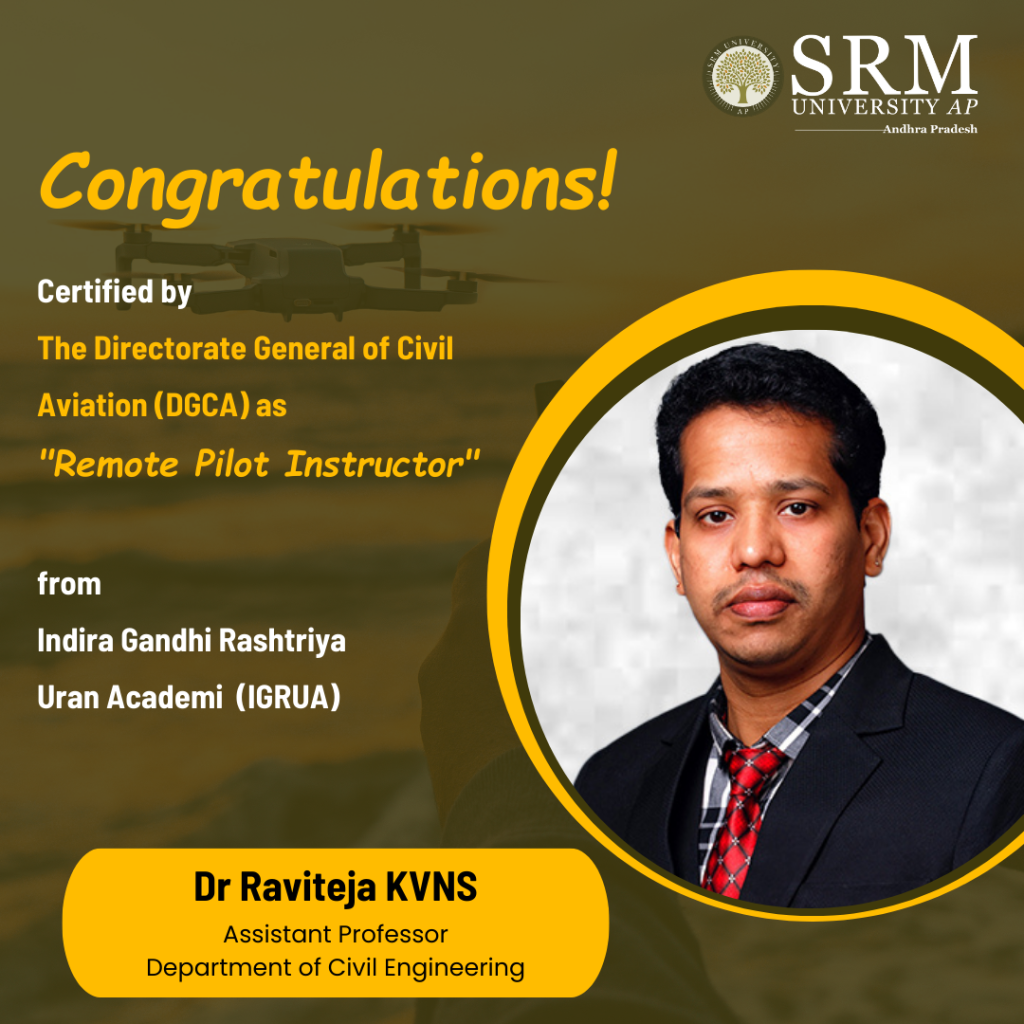
The world of technology is constantly evolving, and the aviation industry is no exception. From being operated exclusively by humans, aircraft systems have now advanced into Unmanned Aircraft Systems (UAS). To stay current in this ever-changing landscape, it’s crucial to update and upscale one’s skills.
Dr Raviteja KVNS, Assistant Professor at the Department of Civil Engineering, has successfully completed his rigorous training programme at the highly acclaimed Indira Gandhi Rashtriya Uran Akademi (IGRUA) and is now certified as Remote Pilot Instructor by The Director General of Civil Aviation (DGCA). With his newfound expertise on unmanned aerial vehicles, Dr KNVS is now poised to offer his invaluable guidance and support to aspiring drone pilots.
We extend our sincere congratulations to him on this outstanding achievement.
Continue reading →


